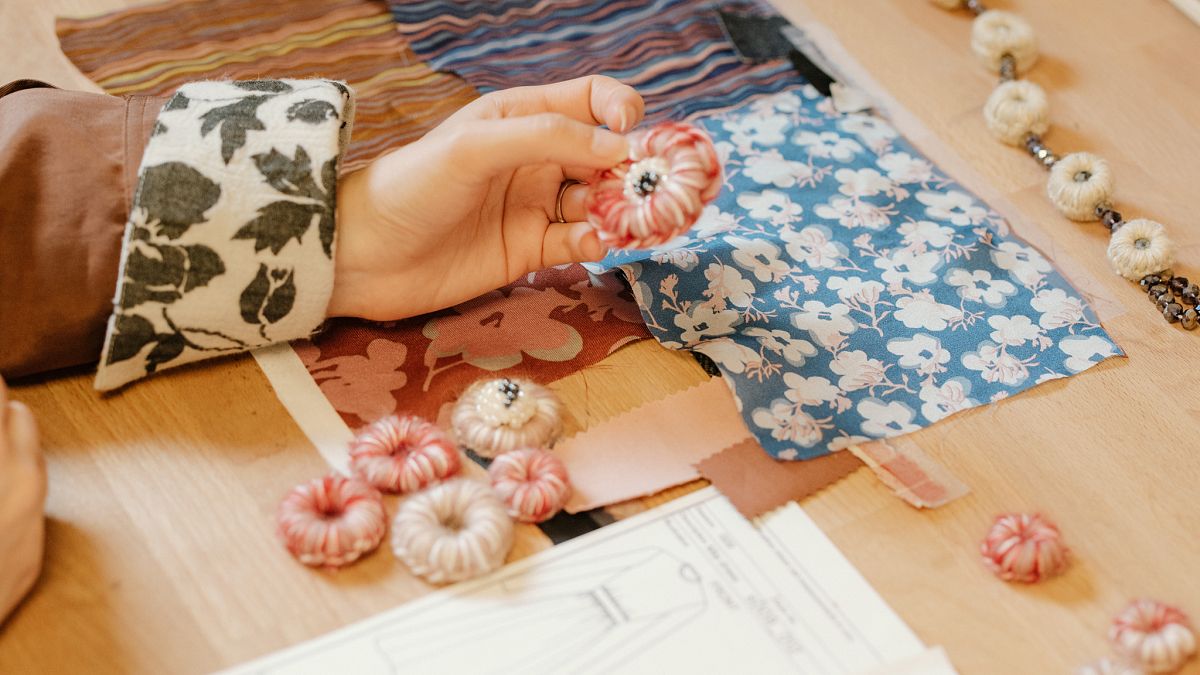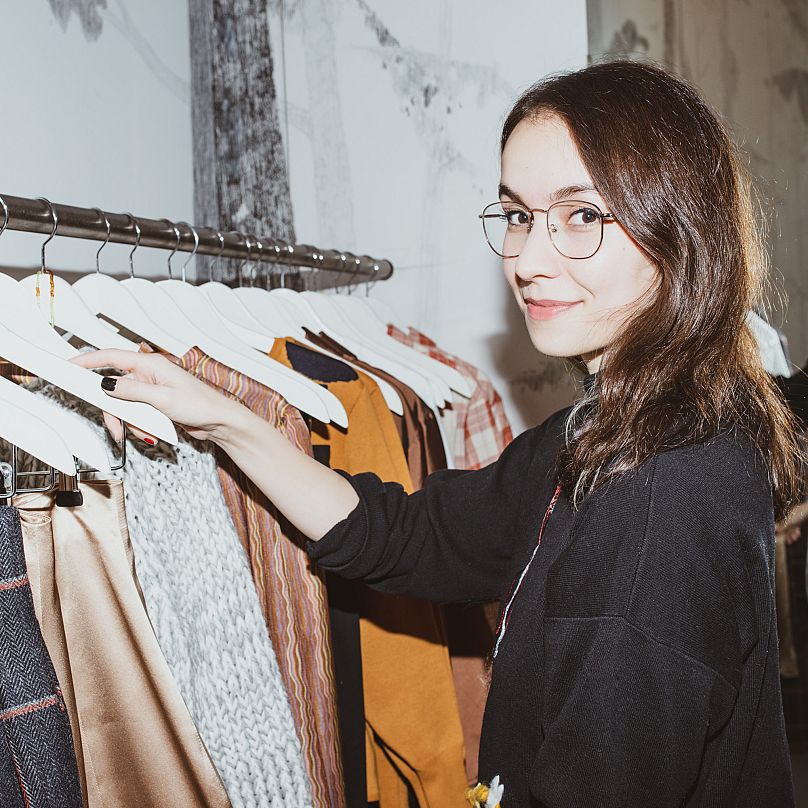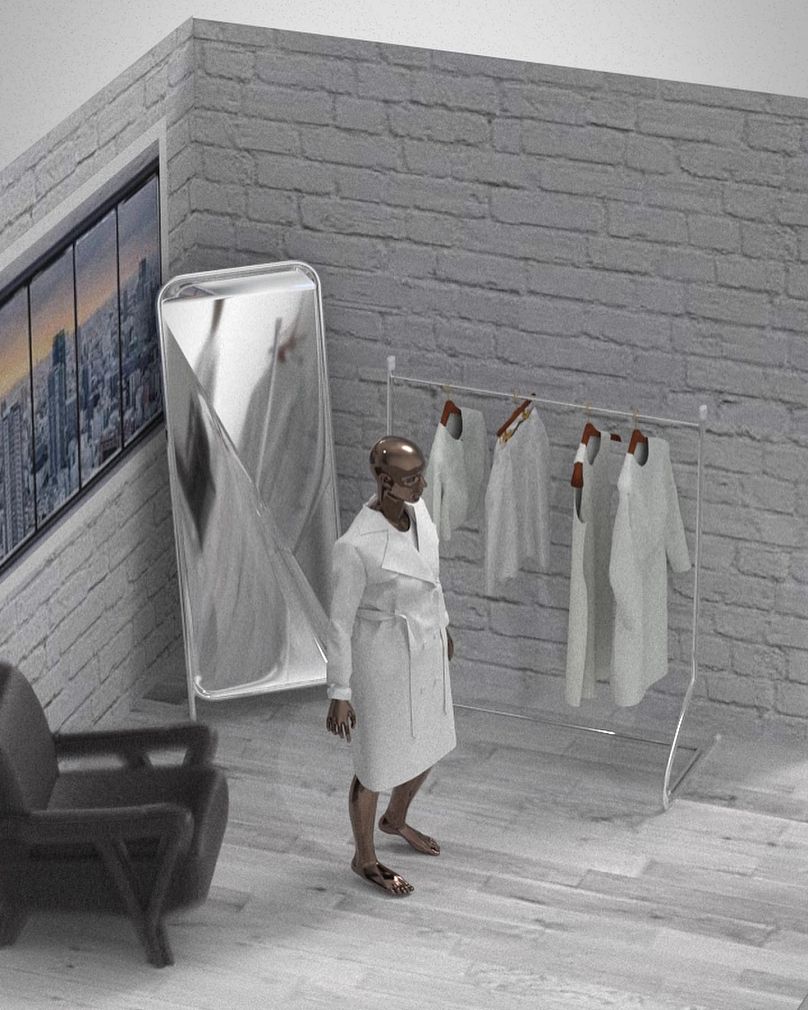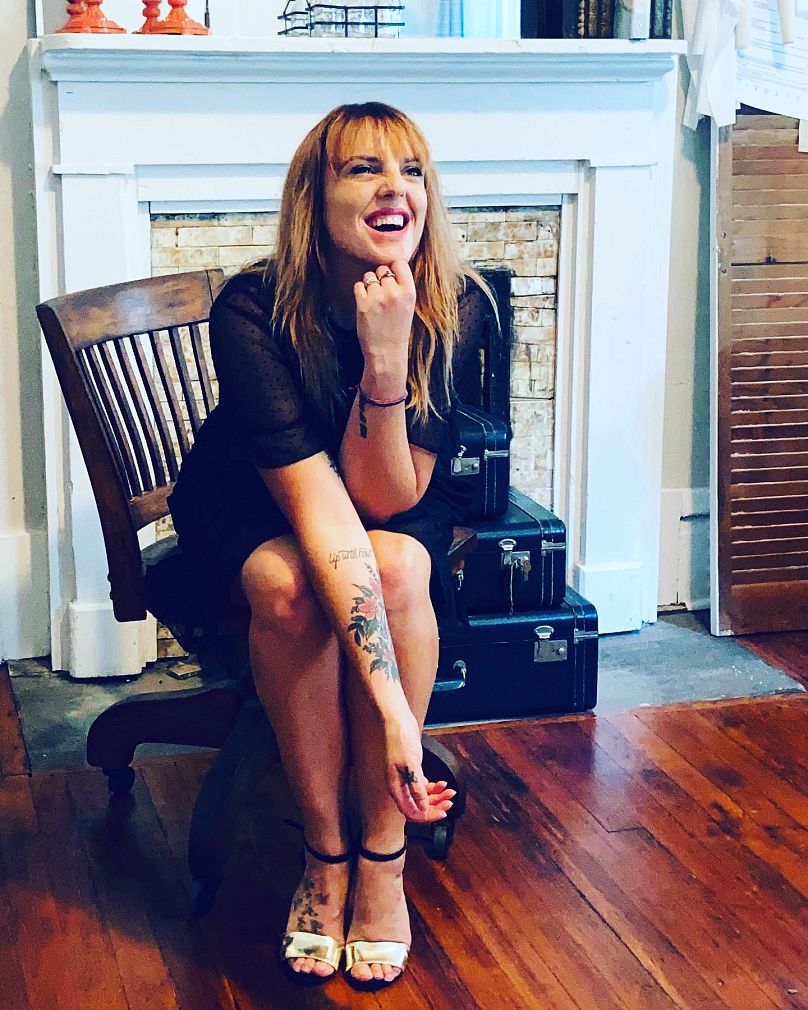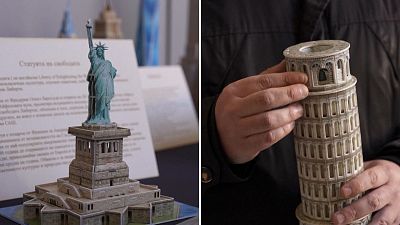Design software imitates the weight, shape and movement of different pre-set fabrics when you apply them to a design, but many designers still want to touch the real thing before they commit to a design.
In an age when we can buy our clothes through a screen, show off our style on social media and even create 3D digital designs to be worn exclusively in the online universe, you might begin to think we’re, literally, losing touch with fashion.
While digital affords many new capabilities to both designers and wearers of fashion, it also has limitations and the ability to feel material is one of them.
Personality pairing?
Touch creates an emotional response in our brains which could explain why we chose to wear what we do. Anabel Maldonado, a neuropsychologist who runs e-commerce platform Psykhe which recommends styles to shoppers based on their personality profile and mood, explains: “We subconsciously like the feel of something because of the psychological payoff it provides. Leather or metal hardware has an armour-esque quality which provides emotional protection, soft fabrics with a heavy weight offset anxiety, or if you’re feeling more confident and extroverted then you might buy more slinky fabrics.”
This is particularly important for groups of neurodiverse individuals who experience sensory overwhelm. Tommy Hilfiger has created a line of adaptive clothing which aims to make getting dressed easier for all people and includes t-shirts with flat seams and no tags which can cause discomfort.
Online shopping and connectivity
We also experience this emotional response to touch when shopping online. “When we shop online, we don’t have that explicit input and it’s not as powerful but words and descriptions mean our brain imagines a connection with what it feels like,” says Maldonado.
For designers, getting hands-on is as much about finding inspiration as much as it is about making something pleasant for wearers. Sabinna Rachimova, a fashion designer who worked at Dior and Mary Katrantzou before founding her own label Sabinna, says: “There’s something magical about touching fabrics. I might have something in my mind but then I find an amazing material, it can improve it,” she says.
Rachimova’s design process starts with creating a moodboard before translating concepts into sketches. She then searches for a fabric that can create the shape required and fall and move in the way intended. Weight and drape of materials are just as important as style and hand-feel. She regularly visits her suppliers to find these materials and order samples to construct mock-ups and decide on the final outcome before producing it in larger quantities for customers.
How can 3D design software help?
It’s these last steps of experimenting with fabrics and creating sample pieces that digital design aims to make more efficient. Instead of creating physical samples of clothing, designers can use 3D design software to try it in a different colour, change the sleeve style or drop the hemline in a few clicks. It saves time, money and waste, but some designers are reluctant to embrace it.
Stephanie Grace Foy, a 3D fashion design specialist, says: “Some people seem to think that if a sample hasn’t been checked over physically, less care has gone into it.” However, she believes it allows for more creative experimentation: “When I was working in-house at high street brands, we’d have to meet with the fabric suppliers, pre-plan what we wanted to work with, wait to order them in and then start playing around with the drape. It slows down the process and ups your costs. With digital, you can try ten to 15 sample colour ways without having to physically make them.”
Design software imitates the weight, shape and movement of different pre-set fabrics when you apply them to a design, but many designers still want to touch the real thing before they commit to a design.
Fabric supplier, SwatchOn, is seeking to solve this with software platform CLO by turning 200,000 of its fabrics into digital samples. Designers can order swatches so they are able to feel the material while working with that exact fabric in a digital design. “Swatch On is leading the way in creating digital fabric samples. It’s interactive, it’s instant, there’s more variety and it cuts the carbon footprint because you don’t need huge samples,” says Foy.
Rachimova doesn’t currently use digital design but says she wouldn’t rule it out and thinks it will become more widely used in the future: “Touch and being hands-on has been super important in any design experience I’ve had, but I wouldn’t be surprised if designers coming into the industry in the next few years have a different approach.”
As digital becomes more dominant in fashion, technology will advance to make up for its shortcomings. Technology company Tanvas is working on a solution whereby screens can imitate the feel of the things we see on them. In 2017, it partnered with menswear e-commerce site Bonobos to allow customers to ‘feel’ the materials of clothing available to buy.
The way we make and consume fashion may be changing, but our need for connection and to engage all our senses has never been stronger.
